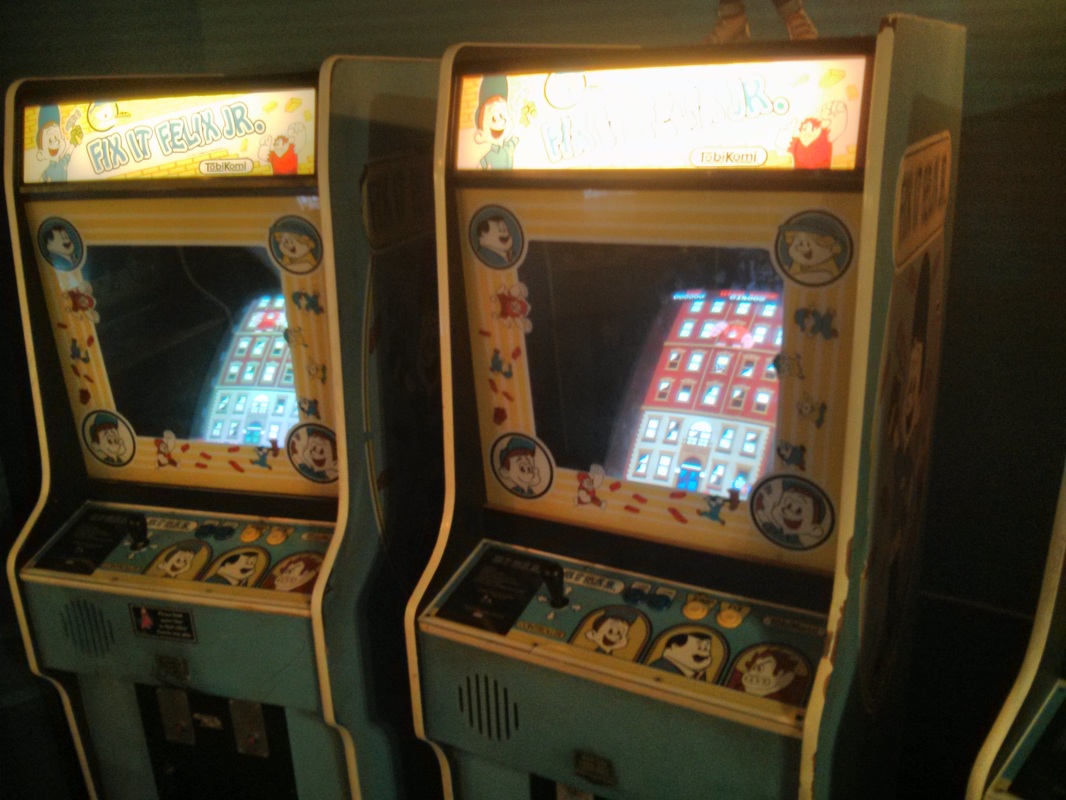099
We just returned from a trip to Disney World. I could go on and on about how impressive I found nearly every aspect of the park. How the garbage cans are uniquely designed to be both ever present and completely invisible. How lines for rides are finely tuned psychological tricks that can make you feel like you haven’t waited very long at all, while still keeping you thoroughly corralled and out of the way of passing traffic. People at Disney have put an enormous amount of work into making the actual functioning machinery of the park disappear. That is probably why I found the fictional game created for Wreck It Ralph so impressive.
The Fix It Felix Jr. arcade machine was created to disappear. You would think that the first impulse of a gargantuan entertainment company would be to pull your focus to whatever peripheral merchandise they had on offer. This game could have been a massive movie tie in, put out on every game system available, and sold by the hundreds to collectors as stand up cabinets for home arcades. Instead, you can download the executable for the game for free to run on any home pc. It’s really quite a good game too.
The arcade machine appears to be a gutted and repurposed Nintendo cabinet for Donkey Kong or Donkey Kong Jr. The control panel and screen bezel artwork certainly apes the Donkey Kong cabinet in some really shameless ways. If I had to hazard a guess, I would say that they art direction for Fix It Felix Jr. was to imagine an alternate world where Donkey Kong was never created and Fix it Felix was in fact the first Shigeru Miyamoto game. Fix It Felix Jr was the follow up sequel released in 1982. If you tuck this cabinet into a row of other classic games from the early to mid 80s, as they did in the one arcade we went to, it blends in so thoroughly that It would be difficult for someone who didn’t know to tell that it is only a year or two old.
This historical camouflage covered every aspect of the machine. Different part of the decals had been faded in different ways. The crt monitors used as the games displays were in various states of phosphor degradation, so the color reproduction on one machine was completely different from it’s neighbors. Scrapes on the sides of the case were in straight lines at different heights, hinting that at some point in the past 30 fictional years another shorter cabinet had rubbed against it in transport. There were different spring tensions in the sticks suggesting that one cabinet had seen more abuse than the others. One of the machines even had a cigarette burn in the acrylic control surface.
I don’t know if I have ever seen a fictional artifact so fully realized. It’s especially impressive considering that the target audience for the movie would not have been born when this game was supposed to have come out. There is a very real chance that kids could walk into that arcade and think that Wreck it Ralph was based on an actual game that came out in 1982. Whoever you are who made these things, you have my applause.
